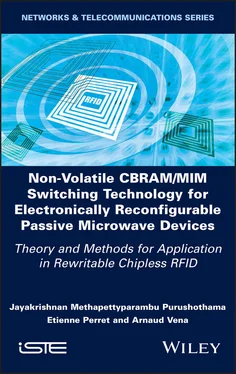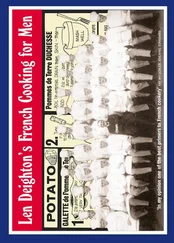5 Preface
6 Begin Reading
7 Conclusion
8 Appendix
9 References
10 Index
11 End User License Agreement
1 v
2 ii
3 iii
4 iv
5 ix
6 x
7 xi
8 xii
9 1
10 2
11 3
12 4
13 5
14 6
15 7
16 8
17 9
18 10
19 11
20 12
21 13
22 14
23 15
24 16
25 17
26 18
27 19
28 20
29 21
30 22
31 23
32 24
33 25
34 26
35 27
36 28
37 29
38 30
39 31
40 32
41 33
42 34
43 35
44 36
45 37
46 38
47 39
48 41
49 42
50 43
51 44
52 45
53 46
54 47
55 48
56 49
57 50
58 51
59 52
60 53
61 54
62 55
63 56
64 57
65 58
66 59
67 60
68 61
69 62
70 63
71 64
72 65
73 66
74 67
75 68
76 69
77 70
78 71
79 72
80 73
81 74
82 75
83 76
84 77
85 78
86 79
87 80
88 81
89 82
90 83
91 84
92 85
93 86
94 87
95 88
96 89
97 90
98 91
99 92
100 93
101 94
102 95
103 96
104 97
105 98
106 99
107 100
108 101
109 102
110 103
111 104
112 105
113 106
114 107
115 108
116 109
117 110
118 111
119 112
120 113
121 114
122 115
123 116
124 117
125 119
126 120
127 121
128 122
129 123
130 124
131 125
132 126
133 127
134 128
135 129
136 130
137 131
138 132
139 133
140 134
141 135
142 136
143 137
144 138
145 139
146 140
147 141
148 142
149 143
150 144
151 145
152 146
153 147
154 148
155 149
156 150
157 151
158 152
159 153
160 154
161 155
162 156
163 157
164 158
165 159
166 160
167 161
168 162
169 163
170 164
171 165
172 166
173 167
174 168
175 169
176 170
177 171
178 172
179 173
180 174
181 175
182 176
183 177
184 178
185 179
186 181
187 182
188 183
189 184
190 185
191 186
192 187
193 188
194 189
195 190
196 191
197 192
198 193
199 194
200 195
201 197
202 198
203 199
204 200
205 201
“…ajnaana-timirandhasya jnanaanjana-salakaya caksur-unmilitam yena tasmai sri-guruve namah…”
(Excerpts from Indian philosophy in Sanskrit language)
I humbly express my deep gratitude and obeisance to all my dear teachers who opened my eyes to the wisdom of knowledge, away from the blindness of ignorance, in all phases of my life…
(Translation)
Series EditorEtienne Perret
Non-Volatile CBRAM/MIM Switching Technology for Electronically Reconfigurable Passive Microwave Devices
Theory and Methods for Application in Rewritable Chipless RFID
Jayakrishnan Methapettyparambu Purushothama
Etienne Perret
Arnaud Vena

First published 2022 in Great Britain and the United States by ISTE Ltd and John Wiley & Sons, Inc.
Apart from any fair dealing for the purposes of research or private study, or criticism or review, as permitted under the Copyright, Designs and Patents Act 1988, this publication may only be reproduced, stored or transmitted, in any form or by any means, with the prior permission in writing of the publishers, or in the case of reprographic reproduction in accordance with the terms and licenses issued by the CLA. Enquiries concerning reproduction outside these terms should be sent to the publishers at the undermentioned address:
ISTE Ltd
27-37 St George’s Road
London SW19 4EU
UK
www.iste.co.uk
John Wiley & Sons, Inc.
111 River Street
Hoboken, NJ 07030
USA
www.wiley.com
© ISTE Ltd 2022
The rights of Jayakrishnan Methapettyparambu Purushothama, Etienne Perret and Arnaud Vena to be identified as the authors of this work have been asserted by them in accordance with the Copyright, Designs and Patents Act 1988.
Library of Congress Control Number: 2021949301
British Library Cataloguing-in-Publication Data
A CIP record for this book is available from the British Library
ISBN 978-1-78630-813-9
Science means constantly walking a tightrope between blind faith and curiosity; between expertise and creativity; between bias and openness; between experience and epiphany; between ambition and passion; and between arrogance and conviction – in short, between an old today and a new tomorrow 1.
Heinrich Rohrer
(Swiss Physicist)
Radio has made people smarter since its discovery in the late 1800s. Now scientists are trying to make radios smart to make life even easier. Electromagnetic propagating waves in the range of 30 kHz–300 GHz are called radio waves, and electrical equipment handling these propagations are generally called radio or radio frequency (RF) devices. Human life is dependent on RF electronics in our everyday routine. TV and radio broadcast, mobile phone communication, the Internet, microwave heating and so on are an integral part of our daily life, implicitly or explicitly.
Radio equipment can be an active device (that uses an active power source for operation), like a mobile phone or a television set, or passive equipment (that does not use an active power source for operation or data storage, but scavenges a part of an interrogating energy source), like a contactless credit card, or an anti-theft RFID label in a supermarket.
Communication, connectivity and surveillance are the major fields that utilize most of the RF electronics in this era. This may involve the connectivity between two individuals separated in two continents or between two electrical devices in a same drawing room. The advent of the Internet of things (IoT), backed by 5G communication technologies, has intensified this demand by providing connectivity to almost all our daily utility accompaniments. However, all this electrical equipment, whether active or passive, requires electrical switches, beginning with the initial need for power, and these span the entirety of the internal RF circuitry. These switches operate in different domains, ranging from electrical power switches to different relays, selectors, limit switches and RF switches.
Among these, RF switches play a key role in their domain and are unique with respect to required performances. These are used not only in wireless communications, but also in smart RF sensors and actuators of the future. RF switches allow electronic reconfiguration of device parameters such as operating frequency in a filter, radiation pattern in an antenna and so on, in order to make these devices more efficient. They are present in all communication systems and allow, in summary, signal multiplexing or regulation, so as to reconfigure, or dynamically control, the system. Today’s technological solutions for RF switching (solid-state semiconductor switches and RF micro-electromechanical-systems [MEMS]) need some improvements to meet the emerging requirements, in which the most desired innovation is non-volatile operation, i.e. operating without any energy requirements for maintaining an impedance state. Such a broadband solution, based on a flexible and low cost approach, is eagerly awaited.
Читать дальше













